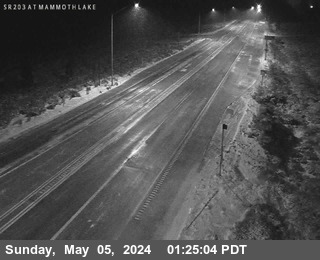Brought to you by Howard Sheckter
Mammoth Weather Outlook
As Bering Sea Bomber Spins Up, So does the West Coast Ridge Build Up…..Record or Near Record Highs expected this weekend….Upper Ridge to both Sharpen then Retrograde Enough for Inside Slider Type Systems Next Week……WX To Continue Dry…..
Friday November 7, 2014
Saturday AM Comments:
1. Fridays High temp was 70 at the Ranger Station in town. That was the first 70 for that date breaking the previous record by 5 degrees in 2006.
2. Today Saturday is the last 70 ever recorded so late in the year. That occurred during the warm spell in 2006
3. The forecast high for today Saturday in Mammoth is 69. If we hit 70 by chance today, that would tie the warmest day so late in the Fall season.
4. A cool down will begin early next week as the upper high retrogrades west and cooler Canadian air slips south. The Models were showing a weak break through of the westerly’s next Thursday and a slight chance of some showers Thursday night and Friday.
5. No doubt the cooling trend will continue the next week with highs returning to more seasonal levels by Thursday and Friday. (Low 50s)
6. There is some suggestion this morning that a strengthening mid latitude upper jet may develop by the end of the 3rd week of November. This is just a suggestion at this time.
Saturday PM:
Weak under cutting is now expected later the new week with a slight chance of showers on Thursday. There is more evidence today with the ensembles, that a strengthening mid latitude upper jet will develop toward the 18th, 19 and 20th… However, The upper jet still is weakening at this point as it moves through the mean ridge position. Need more time to watch this……
More later……..The Dweeber…
——————————————————————————————————————————————————————————————————————————————————————–
The Dweebs acknowledge that the weather in California is way nicer then it needs to be this time of the year. And for those that are sweating it! No pun intended, it’s likely to continue more often than not the next couple of weeks…There will be record or near record highs for some stations reporting this weekend.
The big west coast ridge will be flattened at times for cooling and even the possibility of some showers over the next couple of week. However it is doubtful that we will get a meaningful storm before the 18th.
Are the Dweebs concerned at this time whether we’ll get any snow this year? Absolutely not… The Dweebs are concerned about the SSTA patterns along the west coast and up into the Gulf of AK. The Sea Surface temps along the west coast are running anomalies of +1C to +2.5C above normal, right up into the Gulf of AK.
“Upper Level highs” love Warmer than normal SSTs; (+SSTA’s), just like Continental Highs love the surface heat of the Desert SW. So we have a system in place that supports upper level ridging along the west coast, at least thermally. Contrary to some beliefs, anomalous warm water along the west coast does not have anything to do with a wet CA winter. The Warmer Water is often symptomatic of a Kelvin Wave that initiated it months before…or just a +PDO. Kelvin Waves can be associated with El Ninos or they may not be successful in it initiating it, in which case you just get warm water along the west coast, with often times a big upper ridge over the top of it.
Then you have to add in the Negative phase of the QBO which favors blocking over the Davis Straits and Greenland area. The east to west phase of the QBO also favors a -AO (Arctic Oscillation) which tends to suppress the Polar Vortex’s further south. The -AO is associated with higher surface pressure at the North Pole. So the combination of ridging from South along the west coast up into AK, plus a suppressed PV effecting the Great lakes South and East can make for warmer then normal Novembers into Winter. And lets also acknowledge the anomalous snow cover over Eurasia. That is another thermal anchor that effects the wave length across the pacific. All this together should keep the West Warm and Dry and the East Frigid. That is certainly what is probable over the next two weeks+. Will this be the winter? It was in 1976/77. The Wild Card is ENSO. We really do not know what it’s going to do. And it is too early to know for sure. We do not know for sure how strong it is going to be. NCEP just updated with a 58% chance of a weak El Nino. So odds are it will be a weak and to a lesser chance, a moderate El Nino. How much warmer does it need to be to be meaningful. Only .5C or about 1F warmer. That does not seem like that much, but it take a lot of energy to get there. It also needs to be throughout the entire Nino Basin…..Not just the central pacific. So we will have to wait a bit longer and see. It is worth noting that some of the rainiest years associated with El Nino had big west coast ridges where the westerlies under cut the west coast ridge. That is often associated with a teleconnection pattern called the (-TNH) IE the negative phase of the Tropical Northern Hemispheric Pattern.
From the CPC:
The TNH pattern reflects large-scale changes in both the location and eastward extent of the Pacific jet stream, and also in the strength and position of the climatological mean Hudson Bay Low (PV). Thus, the pattern significantly modulates the flow of marine air into North America, as well as the southward transport of cold Canadian air into the north-central United States.
The positive phase of the TNH pattern is associated with below-average surface temperatures throughout the western and central United States, and across central and eastern Canada. It is also associated with above-average precipitation across the central and eastern subtropical North Pacific, and below-average precipitation in the western United States and across Cuba, the Bahama Islands, and much of the central North Atlantic Ocean.
The negative phase of the TNH pattern is often observed during December and January when Pacific warm (ENSO) episode conditions are present (Barnston et al. 1991). One recent example of this is the 1994/95 winter season, when mature Pacific warm episode conditions and a strong negative phase of the TNH pattern were present. During this period, the mean Hudson Bay trough was much weaker than normal and shifted northeastward toward the Labrador Sea. Additionally, the Pacific jet stream was much stronger than normal and shifted southward to central California, well south of its climatological mean position in the Pacific Northwest. This flow pattern brought well above-normal temperatures to eastern North America and above-normal rainfall to the southwestern United States.
Longer Range:
The 32 day 51 member ensemble of the ECMWF monthly control initialized last Wednesday PM showed some retrogression of the upper ridge around the 18th of November. There was a system indicated that may bring some snow showers about the 19th or 20th. More significant retrogression was indicated about the 23rd with the beginnings of a west coast storm track Thanksgiving week. It is the type of storm track that would bring meaningful snowfall to the Sierra. Remember, this is an inter-seasonal outlook and subject to change……
Dr Howard and the Dweebs………………..:-)




